- The Great Cornwall Guide
- Destinations
- Things to do
- Beach Guide
- Food & Drink
- Properties
- Journal
- Golden Lobster Reviews
- Destinations
The ONLY holiday guide need when visiting Cornwall.
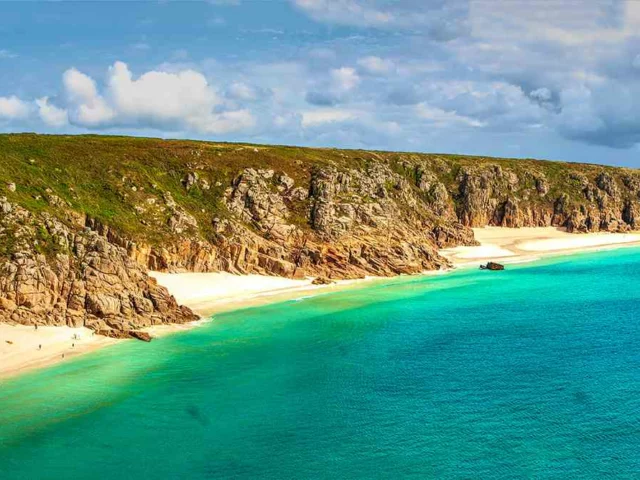
Kicking out into the sea, Cornwall is not just a holiday destination, it is a distinctly magical experience.
With an abundance of natural beauty, 80% of it is surrounded by water, so enjoy a lungful or two of that fresh sea air while you are here, as there are plenty of incredible sights to see.
Painting the landscape by numbers, 30% of it has Area of Outstanding Natural Beauty (AONB) status, while 10% of the UK’s heathland is also located here. Add to that the quality of the natural light, especially in the far west, and you have something really rather special.
Cornwall is also the sunniest and mildest area of the UK due to the Gulf Stream, so enjoys an average 1540 hours of sunshine per year (beautiful Bude, which seems to have its own oceanic micro-climate, often makes the sunniest spot on the weather forecast), with July the sunniest month.
With a variety of unsurpassable landscapes that no other region can offer, Kernow (the Cornish name for this magnificent land) is a sublime place to visit all year round, and not just for its incredible coastline.
Distant and remote, Cornwall is many things to many people, but once you have visited, its sense of ‘difference’ gets under your skin, so you will want to return again and again.
Part of the magic lies in being surrounded by waves on all sides but one (where it is separated from Devon by the River Tamar) but try popping inland, too, for a real sense of this delightful destination.
From wild, mystical moorland to towering cliffs with a plethora of beautiful beaches, Cornwall’s incredibly diverse scenery, given its size, is second to none. Everywhere tells a story, every landscape paints a picture. Check out the place names, where the Cornish language lives on (you will spot it in the bilingual sign posts). From the Z in Zennor to the Z in Nanzijal and you will already find some sensational places to visit without even trying.
Even at night Cornwall delights, as low levels of light pollution mean exceptional sunsets and starlit skies. Cornwall Area of Outstanding Natural Beauty (AONB), especially on Bodmin Moor around Rough Tor, has the kind of pristine night skies only usually imagined in fairy tales, blanketed a sea of stars.
From standing stones and mysterious circles to pretty ponies at Crowdy Reservoir on Bodmin Moor, or for stellar night views, this exposed and sometimes desolate area of historic unenclosed moorland and granite tors lie in stark contrast to the gloriously ever-changing coastline.
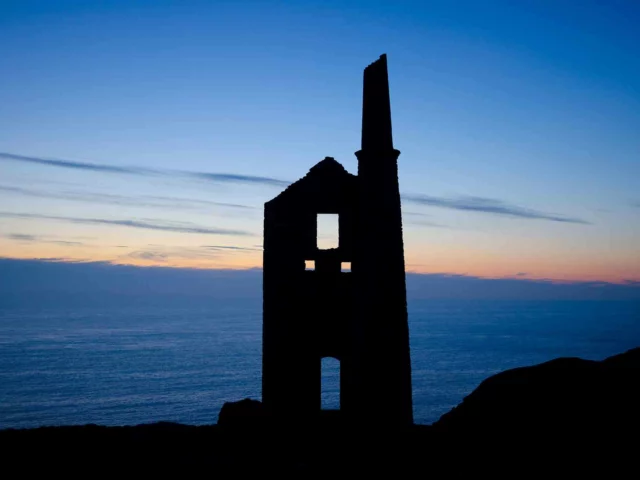
Hundreds of sandy beaches along the way culminate at the end of the UK at the promontory of Land’s End. So, for a sociable seaside family escape, a romantic retreat, a magical mystery tour, an adrenaline-packed break, or a scenery-spotting short-stay, charming Cornwall really does have it all.
Not necessarily all at once, of course but there are broadly three areas to Cornwall: north, south and west. Choose which area sounds most ‘you’.
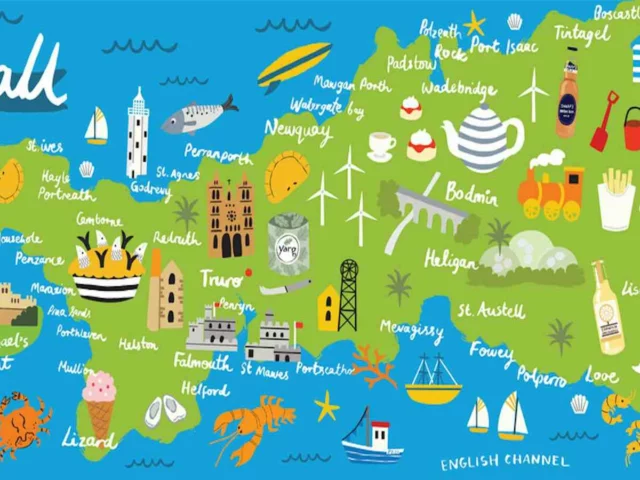
Adventurers who love extreme sports, crashing waves, huge surf, craggy cliffs and spectacular scenery tend to head to the north coast, which was surely carved by the ocean.
It is an awesome place to visit all year round, and not just for its dazzling coastline. The villages and towns are attractive, too. Atlantic waves for surfing and coasteering are a massive attraction in the north of Cornwall, where steep cliffs and granite steps cradle the sandy coves.
For others, the majestic scenery is simply soul-stirring. Said to be Sir john Betjeman’s favourite stretch of Cornwall, looking out to sea in the fresh natural ozone of the morning is mesmerising and revitalising, the seascape constantly changing in nature’s own spa. Take a deep breath and slowly exhale to feel the wonder.
While here, don’t miss: Bedruthan Steps, Boscastle, Bude, Chapel Porth, Padstow, Port Isaac, St Nectan’s Glen and Tintagel.
Lovers of the picturesque will be drawn to the scenic south coast. If you wander the winding roads down to the characterful tiny fishing villages, with their tales of smuggling and romance, you will find the south coast full of surprises, characterised by hidden rocky coves and prettily wooded valleys.
Whitewashed fishermen’s cottages take you back in time along the Cornish waterfront of quaint harbours, while inland, world-renowned sub-tropical gardens and the lush tranquil scenery along the Helford River is calming and relaxing.
While here, don’t miss: Charlestown, Eden Project, Falmouth, Fowey, Looe, Mevagissey, Polperro (which has the smallest shop in Britain) and the Roseland Peninsula.
West Cornwall juts out into the Atlantic, giving it a sense of an untamed wilderness. This narrow strip of land has links to both stretches of coastline. If you stand on the summit of Trencrom Hill or Chapel Carn Brea, you can see to both sides. The moorlands are semi-barren here, with some believing inland is the ‘real Cornwall’, with its tin-mining heritage. Maybe, and it is certainly worth a visit, but by contrast to the industrial heritage, the coastline is an artist’s delight. There is something special about the light in West Cornwall. Its soft romantic glow is Mediterranean, of the type needing no filter. A place to bathe in creativity.
While here, don’t miss: Botallack, Kynance Cove, Mousehole (Mouzel), Minack, Penwith Moors, Penzance, Porthcurno, St Michael’s Mount and of course St Ives.

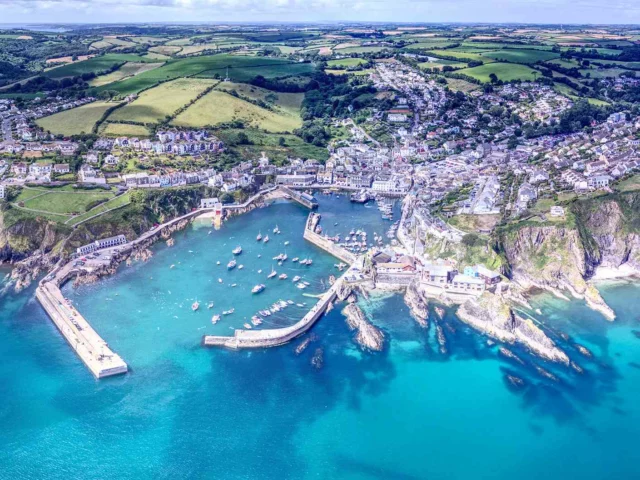
Have you thought about visiting Cornwall’s literary and artistic hotspots while here?
If you love to immerse yourself in art and literature, Cornwall will feel even more special.
One way to explore is to create your own cultural tour by visiting some of the perfect places beloved through time by writers and artists, letting art and literature transform you.
It comes as no surprise that the Cornish landscape has inspired great literature set in wooded creeks, atmospheric moors and along the magnificent coastline. Fine wordsmiths have been inspired by the Duchy, as have other creatives such as artists seeking the wonderful light around St Ives out past Newlyn towards Lamorna.

Places to visit
Did you know that the influential writer D.H. Lawrence lived in Zennor during World War I with his wife, Frieda?
To be fair, the locals were rather suspicious of Lawrence, a pacifist, and his German wife, yet still he described Zennor poetically:
“One sees infinite Atlantic, all peacock mingled colours, and the gorse is sunshine itself. Zennor is a most beautiful place.” See it for yourself.
Meanwhile, the satirical Poet Laureate, Sir John Betjeman was inspired by the beauty of Daymer Bay, a beautiful golden sandy beach at the head of the Camel Estuary. He lived at Trebetherick and is buried near there at St Enodoc Church, so you can visit his final resting place in a land of “oil-lit farms” and “golden unpeopled bays”. A walk across Greenaway – the cliff-top stretch between Polzeath and Trebetherick Point – takes in many of the poet’s old haunts.
The Welsh poet, Dylan Thomas, was married in Cornwall and went on honeymoon to Mousehole in the 1930s; he was a great fan of the Ship Inn on the harbour. Did Mousehole provide inspiration for the village in Under Milk Wood? See what you think as the real identity of his fictional ‘Welsh’ fishing village of Llareggub remains unknown.
Inspired by Romanticism, a young architect, Thomas Hardy, fell in love in Cornwall, while he was overseeing the restoration of St Juliot’s Church tucked away near Boscastle. He wrote a novel about his courtship with a local girl, Emma Gifford (who became his wife) called A Pair of Blue Eyes. There is a memorial to her in the church.
While Tennyson stayed at The Falcon Hotel in Bude in 1848, he hurt his leg on the cobbles trying to reach the sea in the dark. His Idylls of the King told the tale of King Arthur, who lives on in myth and legend at Tintagel.
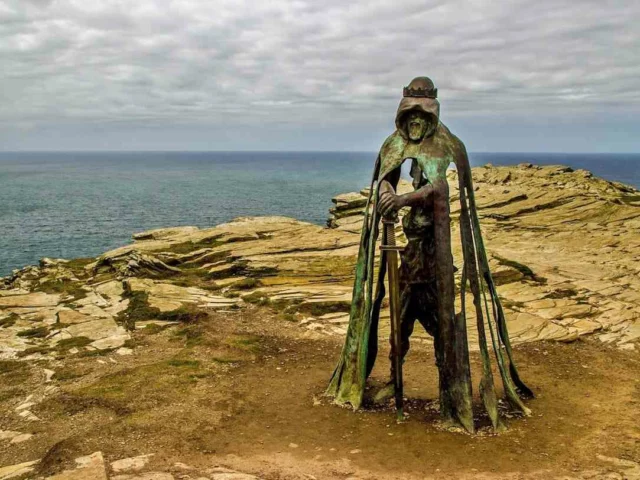
Cornwall’s very own poet, Charles Causley, was born and died in Launceston. He made many references to Cornwall and its legends, but also wrote poems for children. His house, Cyprus Well, in Launceston is mainly used for ‘writers in residence’ but look out for occasional open days. Meanwhile, there are guided walks along The Causley Way and a July annual festival held in historic Launceston, home to a Norman castle, and once the ancient capital of the duchy.
Meanwhile, the children’s classic, Wind in the Willows by Kenneth Grahame was thought to be inspired by the village of Lerryn, near Lostwithiel, so look out for Ratty, Moley or Badger if you go there. Godrevy Lighthouse, exposed to the full fury of the Atlantic, was said to have been often ‘gazed upon’ during childhood summers, said to have inspired Virginia Woolf in To The Lighthouse. Novelist Mary Wesley’s The Camomile Lawn is also based in a setting stretching down to the Cornish cliffs.
How enchanting to take a cultural tour of Cornwall, all easily accessible by road from anywhere in the county.
To more modern times, the well-loved author, Daphne du Maurier, is synonymous with Cornwall, where a festival in her honour takes place annually in her hometown of Fowey. She is perhaps best known for her tale of smuggling, wreckers and rogues in the Jamaica Inn on Bodmin Moor. The Inn, once a coaching house, has expanded but the old building remains with a fine collection of smuggling memorabilia.
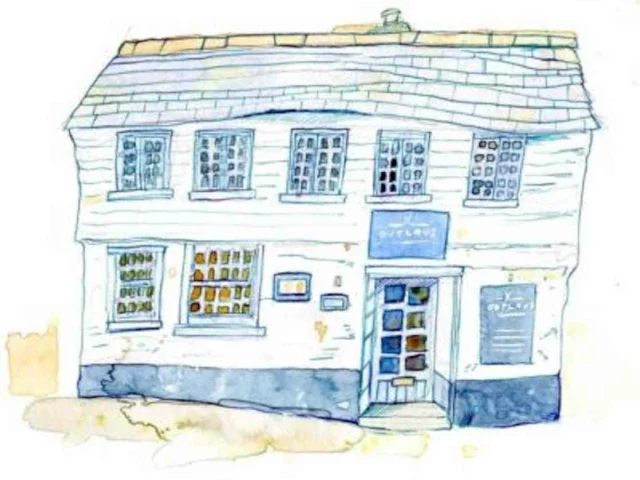
Many overseas visitors are especially taken with the links to the work of Rosamunde Pilcher whose books were dramatised for television in Germany. She was born in Lelant on the Hayle estuary. More recently, television’s Poldark and Doc Martin have popularised areas like Charlestown and Port Isaac. Cornwall has a developing literary festival scene, with events at Endellion, Port Eliot, St Ives, Penzance, and Fowey, so you are never too far from a book-based event.
← (Nathan Outlaw’s Famous Port Issac Restaurant)
Meanwhile, the west of Cornwall is known for its artist-inspired communities at St Ives, where hands, hearts and minds come together. Here you can visit the awesome Tate Gallery and the impressive Barbara Hepworth Studio, or the Leach Pottery. Newlyn has its own art gallery, well worth a visit, associated with the Lamorna colony of British artists. Nearby, Penzance has the Penlee House art gallery, St Just is home to lots of individual galleries, while Truro is awash with creatives, museums and galleries.
J M W Turner visited Cornwall between 1811 and 1813, capturing the region’s wonderful light in his watercolours in his own special way. It might be said that he encouraged a whole raft of artists to discover the creative vibe that is Cornwall. If you enjoy painting yourself, you will have plenty of inspiration, so bring your easel or a sketchpad. A few books have been written about walking the south-west coast path, such as The Salt Path, so again there are plenty of recommendations for you within contemporary literature, too.
It is not just the landscape, however, as contemporary singer-songwriter Tori Amos explained: “I know people sometimes have this fantasy about Cornwall. But the Cornish are so grounded”. Cornish community-spirit is renowned, and you will find it wherever you go.
For visitors today there is so much to see, whether you are a walker/beach lover, a food and drink aficionado or simply here on a family holiday keen to check out the local attractions in Cornwall.
With such a perfect scenic backdrop to your holiday, why not try delightful food to match, from a simple pasty to a celebrity-chef inspired meal?
There are several celebrity chefs in Cornwall, attracted by the beauty of the area but also the many fine quality ingredients available locally. Read our Cornwall Foodie Hotspots guide for a more curated list of our top recommended spots to chow down.
Surrounded by sea, the landscape here is especially environmentally-friendly and keen to be green, which permeates into the way food is purchased and prepared, keeping the local economy very much in mind.
Sustainable food is very much on the menu with a desire to protect natural resources, while providing social benefits and high levels of animal welfare, which attracts world-class chefs.
What they have in common is a love of locally sourced produce whose provenance is known, from daily fresh fish catches from the Cornish surf, to high-quality well-reared beef from the Cornish turf.
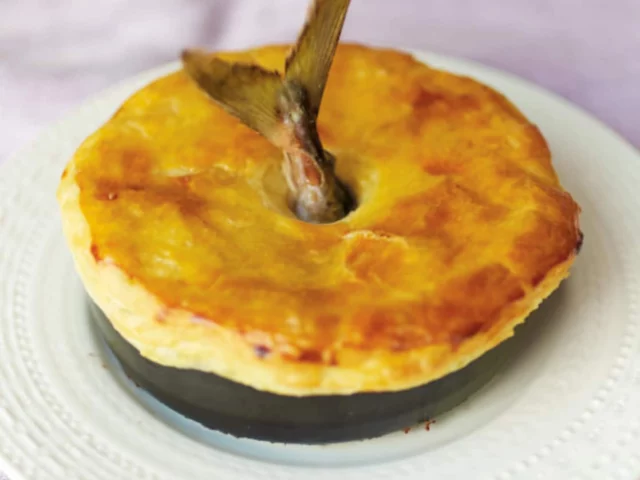
These are served with a contemporary Cornish twist alongside vegetables grown in the mild local climate, from asparagus to potatoes, cauliflower to wild garlic. For foraged foods, meat from grass-fed cattle, organic produce and as environmentally friendly food as possible, Cornwall leads the way.
While here, there are many gourmet restaurants to visit. Try the gastronomic delights of Paul Ainsworth, at Michelin-starred/AA rosette No. 6 in Padstow, which showcases local artisan foods to provide a British menu with a twist.
Of course, Rick Stein in Padstow is also a firm favourite for the finest seafood cooked classically.
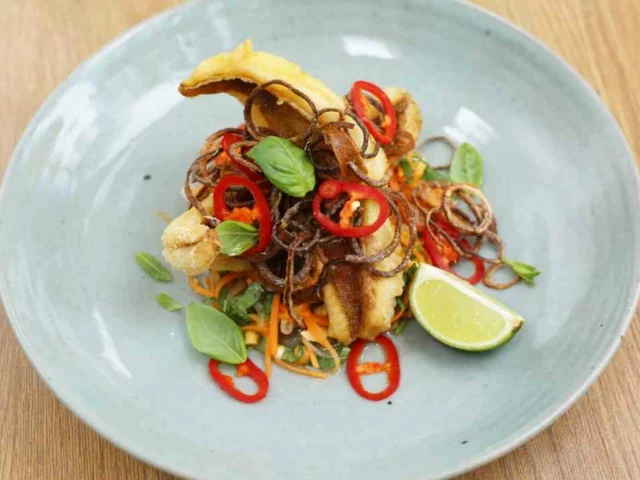

Be prepared to experiment a little. Check out modern superstars which include Ben Prior at his Cornish Kitchen in Marazion, Jude Kereama at Kota in Porthleven which has 2 AA rosettes and Michelin Bib Gourmand, and, of course, the superb Nathan Outlaw, fish-chef extraordinaire at St Enodoc in Rock (2 Michelin stars, 4 AA rosettes).
Other fine dining experiences include St Enodoc (Chef, Guy Owen) and The Dining Room in Rock, The Shore in Penzance, Tabb’s in Truro, Couch’s in Polperro, and The Scarlet at Mawgan Porth, among others.
A step away from fine dining to unpretentious (but still pretty amazing dining) are The Temple and The Deck (Cornwall’s finest fish and chips, we are told) in Bude, The Port William at Trebarwith, Pandora at Falmouth, and The Gurnard’s Head at Zennor, among others. Check out our guide to see what is near to you.
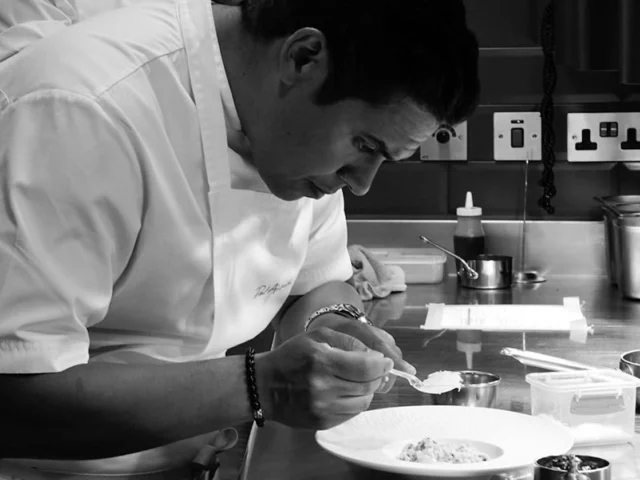

Bringing the chef to you
What many people do not know is that they can book their own private chef when on holiday in Cornwall, such as Craig Barrett in St Austell, Haydn Treneary in Truro, Martin Davies in Newquay, Dave Sargent in Bude and the talented Dan, The Cornish Chef. If you want to bring the restaurant to you and your party for a special occasion, with rustic but hearty home cooking, then this might be a friendly and cost-effective option.
The perfect pubs in Cornwall
Pubs recommended by our visitors as something just a little different include The Barrel at Bude, the Sloop Inn at St Ives, Beerwolf at Falmouth and the Watering Hole at Perranporth, among others (see the guide).
Some pubs have a long history of smuggling and local legends; others are newer but equally characterful. Cornwall’s favourite lager is Korev, just the ticket on a hot day, while ales, craft-keg beers, ciders and now homegrown gins and rums are available in most Cornish pubs.
Some pubs still provide the ‘honeymoon drink’ Cornish Mead, sweet and potent but very Cornish (or try Blackberry Wine, which is, be warned, equally potent).
It was used to accompany the finger food of yore eaten in a meadery, an olde-worlde style eating-house where children are usually welcome. Here, there is no china or cutlery but atmosphere by the bucketload.
There is a busy one at Newlyn, one near Falmouth and one at Penzance. On the north coast, the locations of meaderies are St Agnes and slightly inland, Redruth. Newlyn, by the way, is also well known for its crab, which is said to be better than any other crab. Try it and let us know what you think.
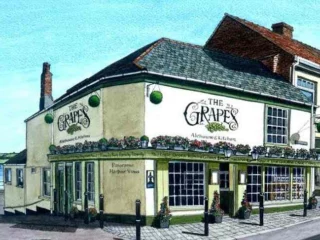
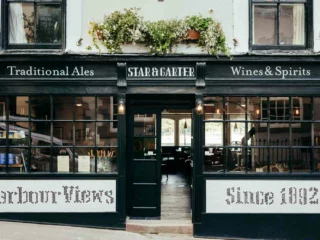
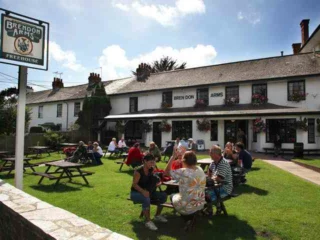
Cornwall is obviously famous for its pasties and scones. You really should not leave without trying both, though maybe not at the same time!
Scones
Yes, it goes without saying that the jam goes on first with a generous dollop of clotted cream added later to the true Cornish cream tea, which is an afternoon delight, best enjoyed outside in the sunshine, ideally with a sea or countryside view.
We can direct you to the best places to find an amazing cream tea that you will seek out on every visit such as Gylly Beach Café, Falmouth or The Hidden Hut at Portscatho.
Cornwall and Devon folk will argue for hours over the history of the cream tea and how it should be served. We don’t do it the Devon way.
The tradition itself flourished following the Victorian tourism boom, and it is one to keep, we think! The jam is invariably strawberry and the cream always clotted (and yes, you can eat the crust). Debrett’s apparently agrees with Cornish etiquette: jam first, spoon then spread, followed by the lush clotted cream.
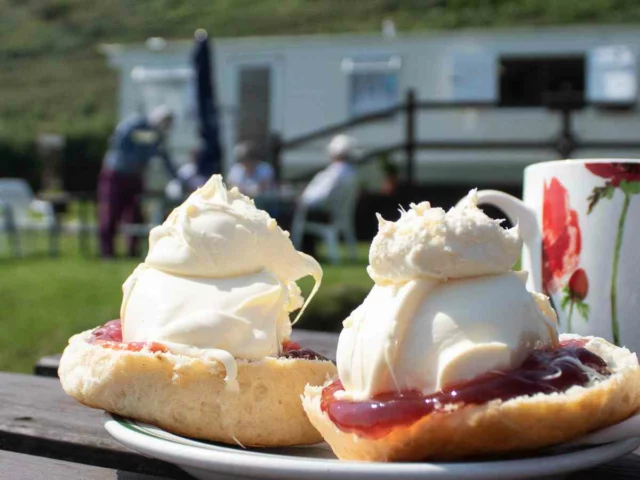
If a cream tea is too rich for you, why not try Saffron Buns? They are a little like tea cakes but traditionally contain currants and saffron (a rather expensive spice, so modern versions probably don’t!)
Hevva Cake is another alternative, rather like Lardy Cake, named after the cry from the cliffs when the shoals of pilchards were spotted. Hevva cakes were baked when the pilchards were landed. It can also be a pudding, but avoid if you are vegetarian. For biscuits, Cornish fairings are a little like gingernuts. They are quite widespread in supermarkets.
Cornish Pasties
Going savoury, traditional pasties call for shortcrust pastry encasing beef, potatoes, swede and onion, but there are now, of course, updated vegetarian versions. Some are far, far better than others, so be guided by experience.
The pasty was the fayre of tin miners cooked by their wives or mothers, but also farmers and fishermen – a pasty would be popped in the pocket and taken down the tin mine. A thick crust was used as a handle to hold the pasty to keep it clean and palatable, away from the arsenic on many miners’ hands. A highly efficient food, it was filling, calorific and self-insulated. The saying goes that the pasty must be made in Cornwall to be a proper one.
“It is said that the Devil never crossed the Tamar into Cornwall on
account of the well-known habit of Cornish women of putting everything
into a pasty, and that he was not sufficiently courageous to risk such a fate!”
Other Cornish specialities include Stargazy Pie, which has the heads of oily pilchards sticking out admiring the stars. This was created in Mousehole, legend has it, to celebrate a fisherman, Tom Bawcock, who heroically braved ferocious seas to feed his starving village. Pilchards were once the backbone of Cornish industry, and the reason why fishing villages like Mevagissey, Polperro, Mousehole and St Ives grew. Now known as the Cornish sardine, you will find them at food festivals around the county and even in supermarkets in Cornwall.
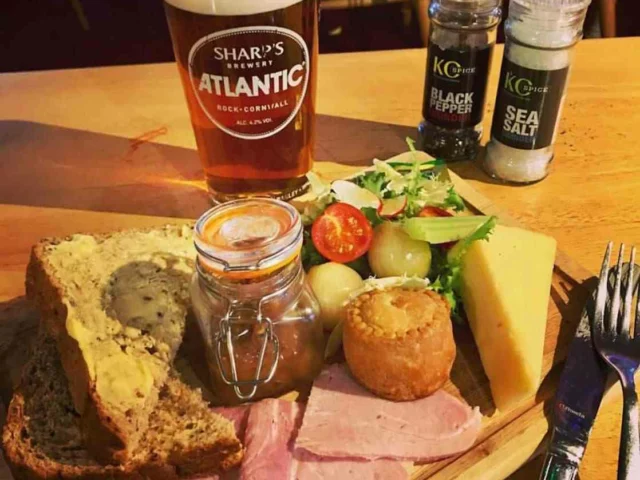
Rather more palatable for many is traditional mild Cornish Yarg cheese (a little like Caerphilly), which makes a lovely addition to a Cornish Ploughman’s lunch. This lemony cheese wrapped in non-stingy (removed by freezing) nettles is named after a Cornish farmer, lan Gray (Yarg is Gray spelled backwards). It is exclusively produced from their herd of Ayrshires, by Lynher Dairies near Truro.
Check our guide to best tea/coffee houses in Cornwall, great places to find beach food, cafes and perfect pub food, all of which have their own best-kept secrets.
Some of the history here is industrial, hard to imagine within this beautiful rural landscape. Cornish tin was trading for around 4000 years, but arsenic was also produced here. At one time, Cornwall had 2,000 tin mines. In 2006, the Cornwall and West Devon Mining Landscape achieved World Heritage Status, which puts it on a historical par with Stonehenge and the Pyramids in terms of importance. The Tin Coast includes places like Botallack, Lelant, and Cape Cornwall.
If you want to discover Cornwall’s tin mining heritage, then there are various recommended places to visit, such as Wheal Martyn, with its china clay heritage centre, the Tolgus Tin Mill, Heartlands (previously a wasteland), Poldark Mine (made famous by the books of Winston Graham and open for underground tours) and Geevor Tin Mine, the largest preserved tin mining site in the country.
For something prettier, National Trust members will be pleased that Cornwall has three key properties to visit: Cotehele, Lanhydrock and Trelissick Gardens but there are many other historical sites dotted around the county, so bring your card for visits and parking.
The Georgian gem, Pencarrow, is not National Trust but is impressive, well worth a visit, with superb tours available by knowledgeable guides, so step back into the past for a tour of this well-loved house featured in Doc Martin, The Fisherman’s Friends and some Rosamunde Pilcher adaptations. Spring is a beautiful time to visit as the gardens are carpeted with bluebells.
Try Trerice, too, a small Elizabethan manor house near Newquay, also National Trust. Tre in Cornish means settlement or homestead, by the way. Pol means a pond or lake, and Pen is Cornish for hill or headland.
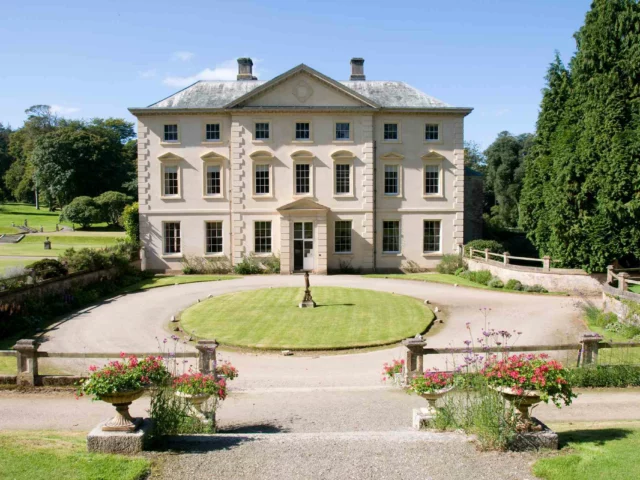
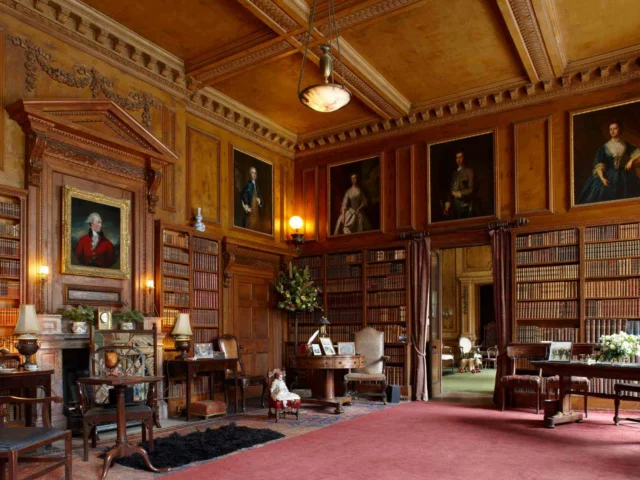
Of course, you will not want to miss St Michael’s Mount, the spectacular backdrop to many a photo, with free rock pooling events on the causeway for children in summer, plus sub-tropical gardens and a historic castle to visit on the island. It feels like you are crossing to another land, so for children especially, it feels magical whether walking the causeway (low tide) or taking the boat.
If World War II absorbs you, then Glendurgan Garden, Falmouth, on the North Helford coastline was where American troops departed for Normandy on D-Day. Many wartime relics remain in place. Check out the famous cherry laurel maze. The Lost Gardens of Heligan also tell a tale. For they suffered badly when the gardeners were sent off to the Great War in 1914, only to be rediscovered in 1990 and restored by Tim Smit of the Eden Project. Find the much-photographed Giant’s Head or Mud Maid, visit the outdoor jungle area with its Burmese rope bridge, or youngsters might especially like the Rare Breed Farm Centre.
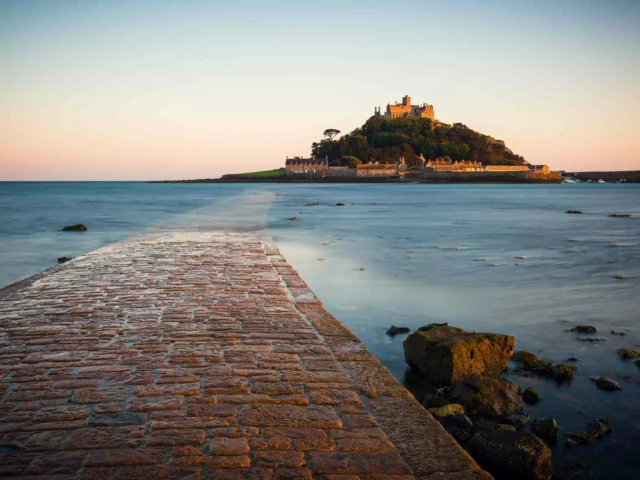
People go on holiday for different reasons. For some, it is to partake in activities they cannot normally enjoy at home, and for others it is full-on rest and relaxation.
If you are already keen on adrenaline sports or want to try them out, then check out our suggestions.
Cornwall is the UK’s surf capital, predominantly along the north coast but with The Surf Academy a little further west, and We Sup Paddle boarding down at Falmouth. Newquay is the mecca for surfers with Fistral Beach and centre for cool, but there are also other options:
The most consistent surfing beaches are
Fistral at Newquay (all abilities)
Summerleaze and Widemouth Bay, Bude (all levels)
Gwithian near Hayle (all skill levels)
Godrevy (good for intermediates)
Perranporth (all levels)
Polzeath (for gentler waves, so great for beginners) near Padstow
Porthmeor at St Ives (popular with learners)
Porthtowan (rather powerful)
Praa Sands at Helston (if there is no surf up north, there may be some here)
Sennen near Land’s End (swell, but fairly sheltered)
Porthleven is great for pros, not beginners
Check out our list of recommended surf schools, including Big Blue at Bude (which also provides coaches trained to work one-to-one with adults and children with disabilities and autism, if needed) and Escape at Newquay.
Other water sports include Stand Up Paddle boarding (SUP), which is gentler but still exciting, Cornish coasteering, kayaking and canoeing, rock climbing and abseiling.
Shoreline in Bude provides a taste of what is available. Not everything is by the sea, but while you are here, the blue stuff is surely calling. For something special and unique, try kite surfing around the castle St Michael’s Mount. For the brave, Newquay Sea Safaris offers Shark Cage Diving, to you might just prefer to watch seals basking on a sea safari.
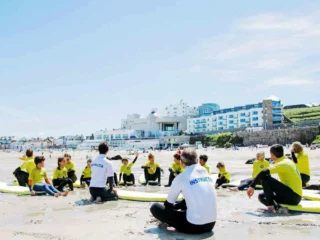
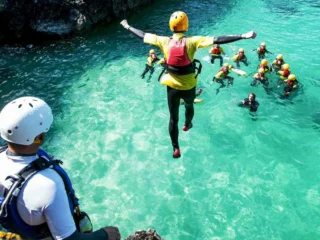
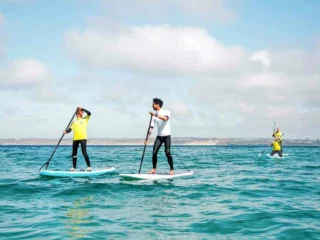
Cornwall is geared up for visitors, especially during mid-high season so you will find plenty of other activities for children of all ages from Newquay Zoo with 130 species, plus acres of sub-tropical gardens.
For animal lovers, try the Blue Reef Aquarium, or Padstow Sea Life Safaris, seeking out the wildlife on an exhilarating powerboat ride. For those who enjoy fun in a pool, the Oasis Waterpark may be for you.
Flambards offers something a little different, incorporating rides and attractions but also some history. Step back in time at the Victorian village or experience Britain during the Blitz with shaking floors and wailing sirens, or discover dinosaurs in the Jurassic Journey.
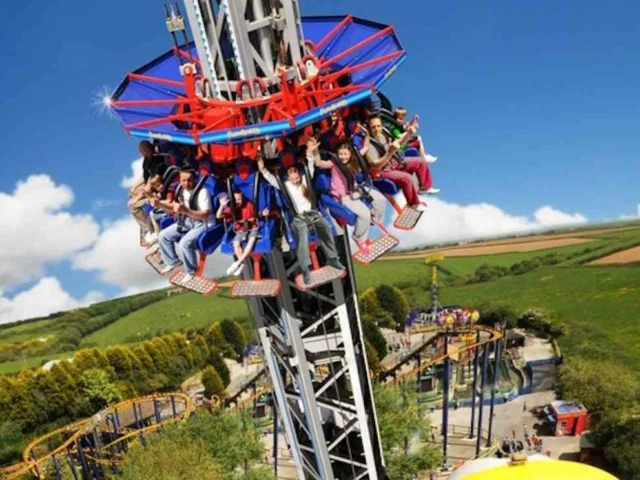

For something very child friendly, you may want to try Bodmin Gaol. Recently revamped at a cost of £40 million, Bodmin Gaol will become an immersive experience, while over at the historic port of Charlestown there is an incredible shipwreck museum, which also gives access to the inner harbour and the tall ship, Kajsamoor.
For something different, try Goonhilly Earth Station visitor centre near Helston. Even if you don’t go in, it is a sight worth seeing for a celebration of earth and space.

Even on holiday, or especially on holiday, we all need a little ‘me time’. For a pampering with spectacular scenery, Cornish spas offer amazing locations to relax and really get away from it all. With their fabulous facilities, watch your cares slip away as you focus on your own wellbeing. Try guided meditations, wellness workshops, beach yoga, and luxurious hydrotherapy pools, alongside more traditional treatments such as massage.
There are some excellent spas in Cornwall, many of which come highly recommended, so there is no need to miss out if a relaxing swim, sauna and treatment is more your bag.
Tranquillity is yours with views to the Atlantic at The Scarlet, for example, where an unforgettable day spa escape includes full use of the steam room, outdoor barrel cedar sauna, indoor and outdoor pools, relaxation and meditation time, plus your treatments of choice.
Couples can re-engage, spending valuable time together at many of the spas, which offer a range of special sensual treatments such as The Headland Spa with its hydrotherapy pool because time together is precious.
Crantock Bay uses organic products for men and women. If you are pregnant or recovering from illness, get in touch and see what special therapies they can offer you. Check our list of recommended options for relaxation and wellbeing in Cornwall.
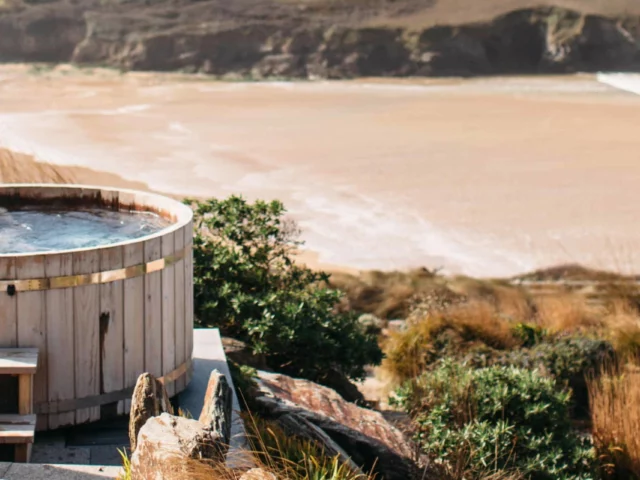
With its coastline stretching to over 250 miles, Cornwall is renowned for its beaches, some of which are Blue flag denoting clean, clear water and excellent facilities. From inaccessible rocky coves to golden expanses of soft sand, all options are available.
Which are the best beaches? Well, it depends what you are looking for.
Porthcurno on the west coast has raw beauty like no other, with crystal clear turquoise water, which can pack a punch with its waves. The marvellous Minack Theatre sits on the cliffs above. The sand is said to be made of pulverised seashells which reflect the light, creating the beautiful colour of the sea. The high cliffs also offer some protection from the wind. At low tide, it is possible to get around to Pedn Vounder (Pednee) but don’t get cut off, else it is a steep climb up the cliff ‘path’.
Kynance Cove on the south coast is another area of extreme natural beauty, with clear water, white sand and a serpentine rock formation. Owned by the National Trust, it is full of caves, sea stacks and islands, rock pooling is great fun here. It is one of the prettiest coves, which was once something of a Cornish secret but has since been popularised by Poldark. The series has really put Cornwall on the map, but it now means that places like Kynance can now get very busy, so is better in low to mid-season. In winter, it is awesome.
The north coast has more wonderful beaches, so it is hard to choose. Summerleaze in Bude is sandy and family-friendly. Next door on the other side of the famous Bude Sea Pool (which is free to use) to it is Middle Beach, generally quieter, leading on to Crooklets Beach. When the tide is out, you can easily walk to Northcott and Sandymouth beaches but do check your tide times. However, you can always return via the south-west coast path, providing beautiful views. You can access this at Maer Cliff near Crooklets, if you want to wander in the other direction to Widemouth, then it is accessed close to the breakwater in Bude. Fistral in Newquay is known as the key surfing beach.
Each beach has its own characteristics, so why not look at our Cornwall beach and beauty spots guide and see what suits your needs best?
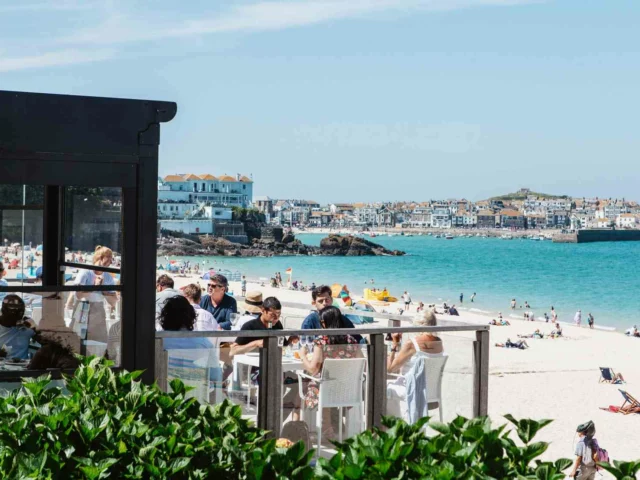
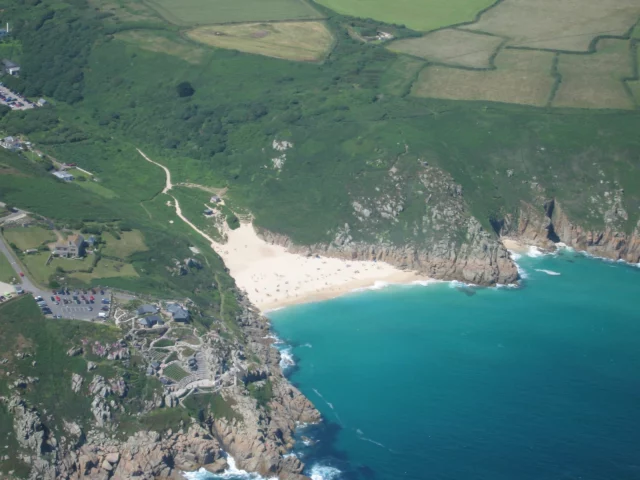
While you’re here – fancy a beach clean?
While at the beach, why not be like a local and do a 2 minute beach clean? The 2 Minute Foundation was started in Bude by writer and surfer, Martin Dorey, whose campaign began in 2013 after furious Atlantic storms battered the beaches of his hometown, Bude. The first #2minutebeachclean stations were placed on 8 Cornish beaches in 2014. There are now over 800 in the UK and Ireland.
It costs nothing to do your bit for the environment and to keep Cornish beaches as plastic-free as possible.
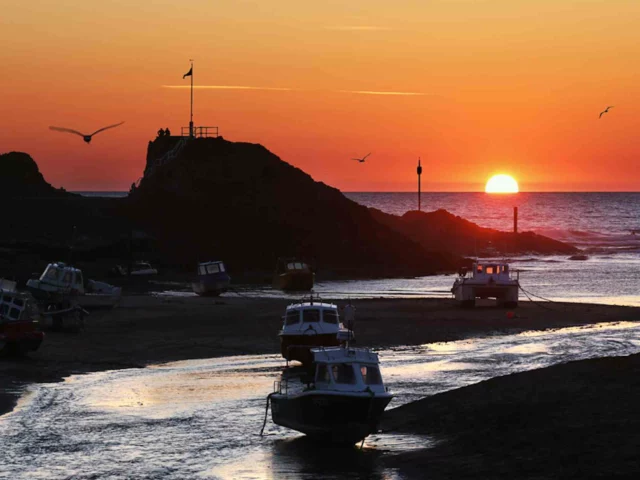
Many of our cottages are dog-friendly, but when you are here you also want places to go that are dog-friendly, too.
Let’s face it, if you are a dog-lover, then your holiday is not a holiday without your pet, who will love a good run on the beach as much as you do. Dogs help reduce stress, improve morale and can even increase your creativity. Of course, they’re welcome.
So check out our list of beaches which are particularly welcoming to responsible dog owners and their canine companions, making Cornwall doggy paradise.
There is also an array of places to eat out, many of which welcome dogs, but some which go the extra mile to make your visit as friendly as possible.
Places like the Tea Cup Tearoom in Mevagissey go the extra mile, providing blankets for soggy doggies, and dog-friendly food and drink alongside the human varieties. For a non-beach walk, try Trebah Garden near Falmouth, which leads you down to Polgwidden Cove.
There is also doggy day care, dog grooming services, and dog-walking available if needed.
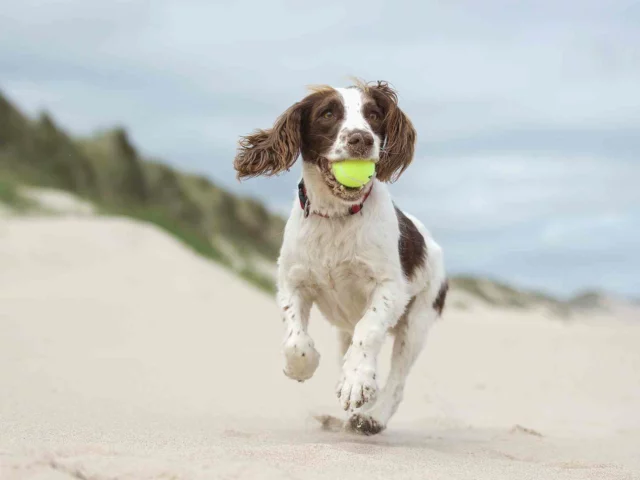
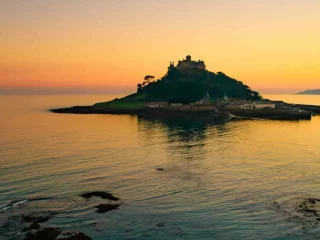
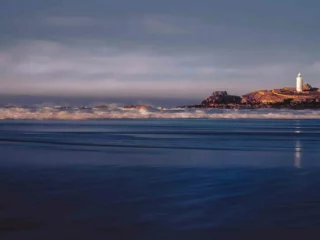
OLYMPUS DIGITAL CAMERA
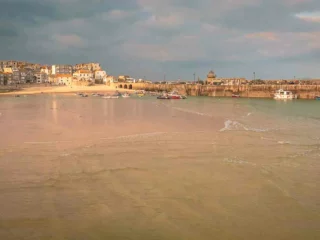
Do you have a Secret Stay? We would love to hear about it! Office Hours Monday to Friday 9am to 5pm
Simply fill in your details below for our team and we will be in contact asap